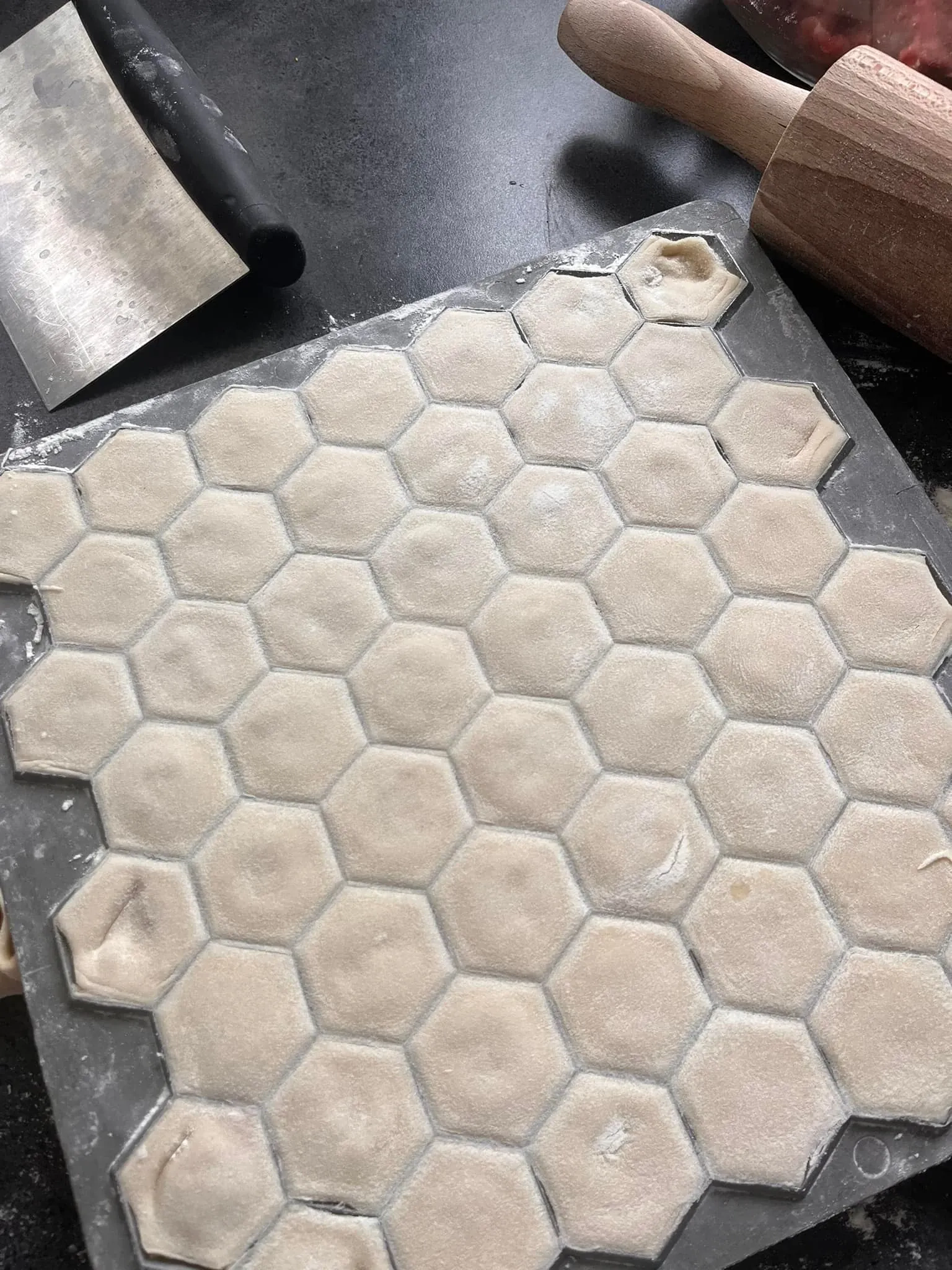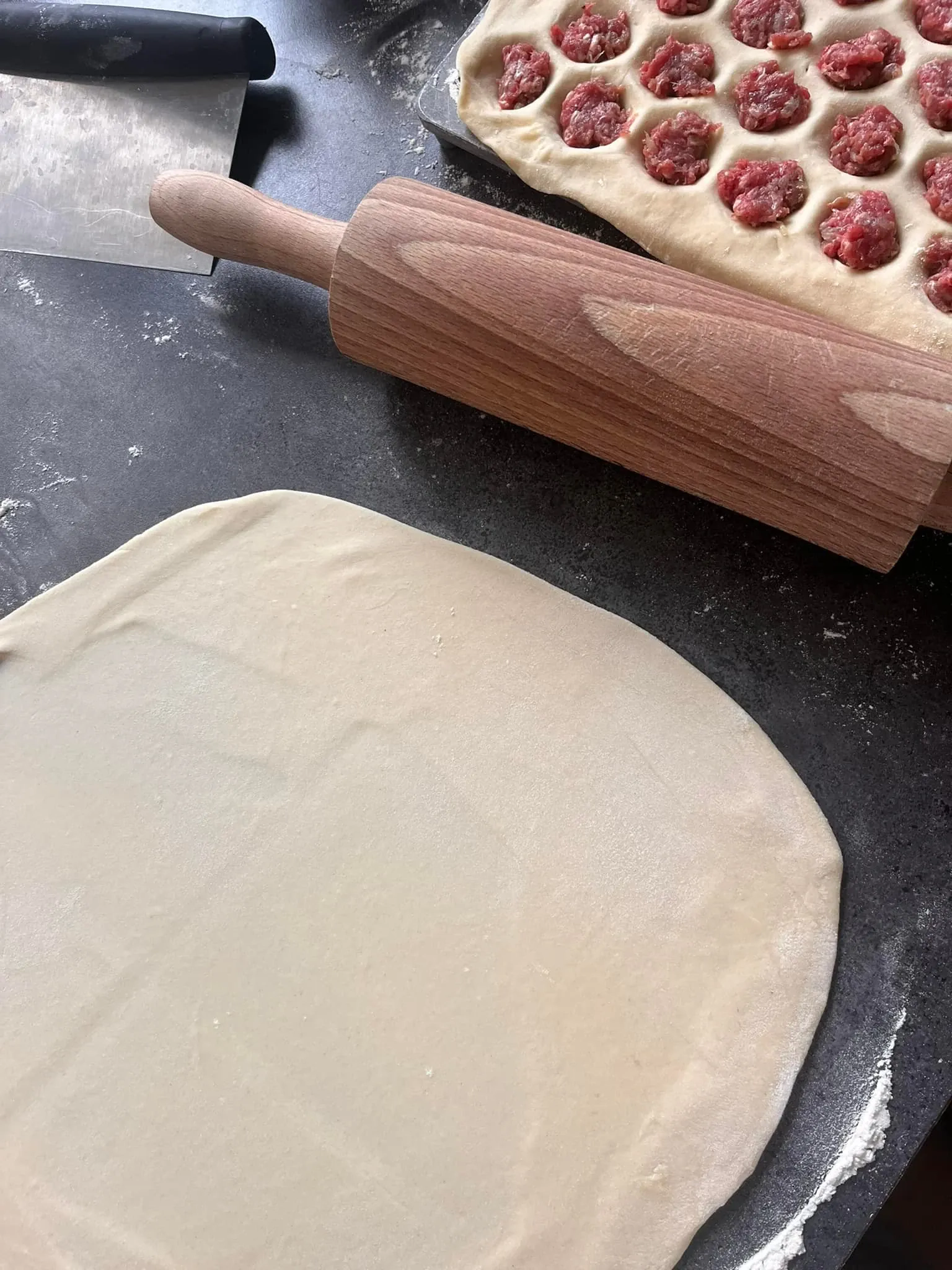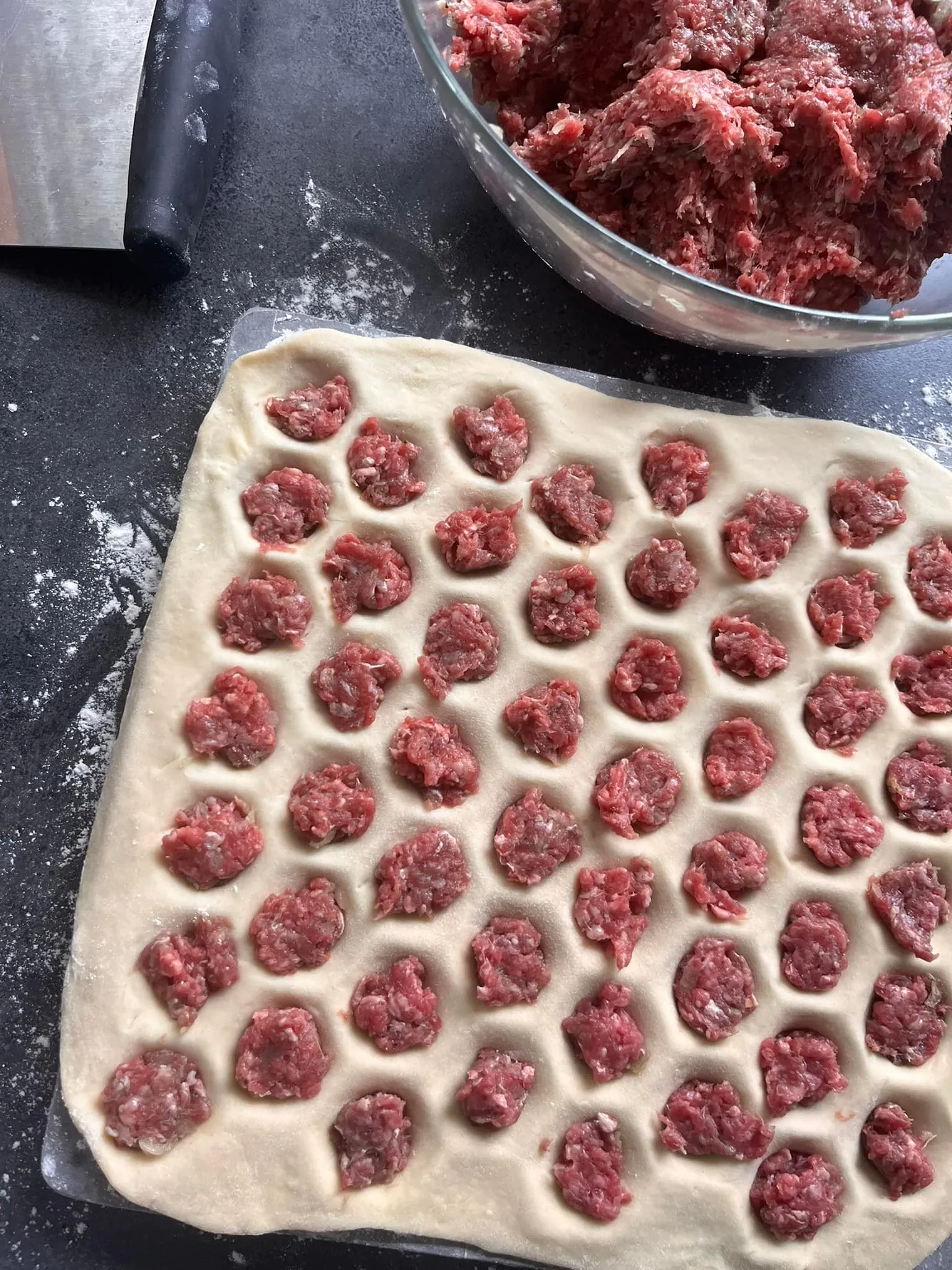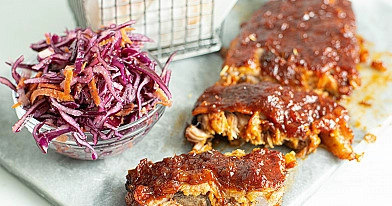
Traditional Lithuanian dumplings (koldūnai) with pork
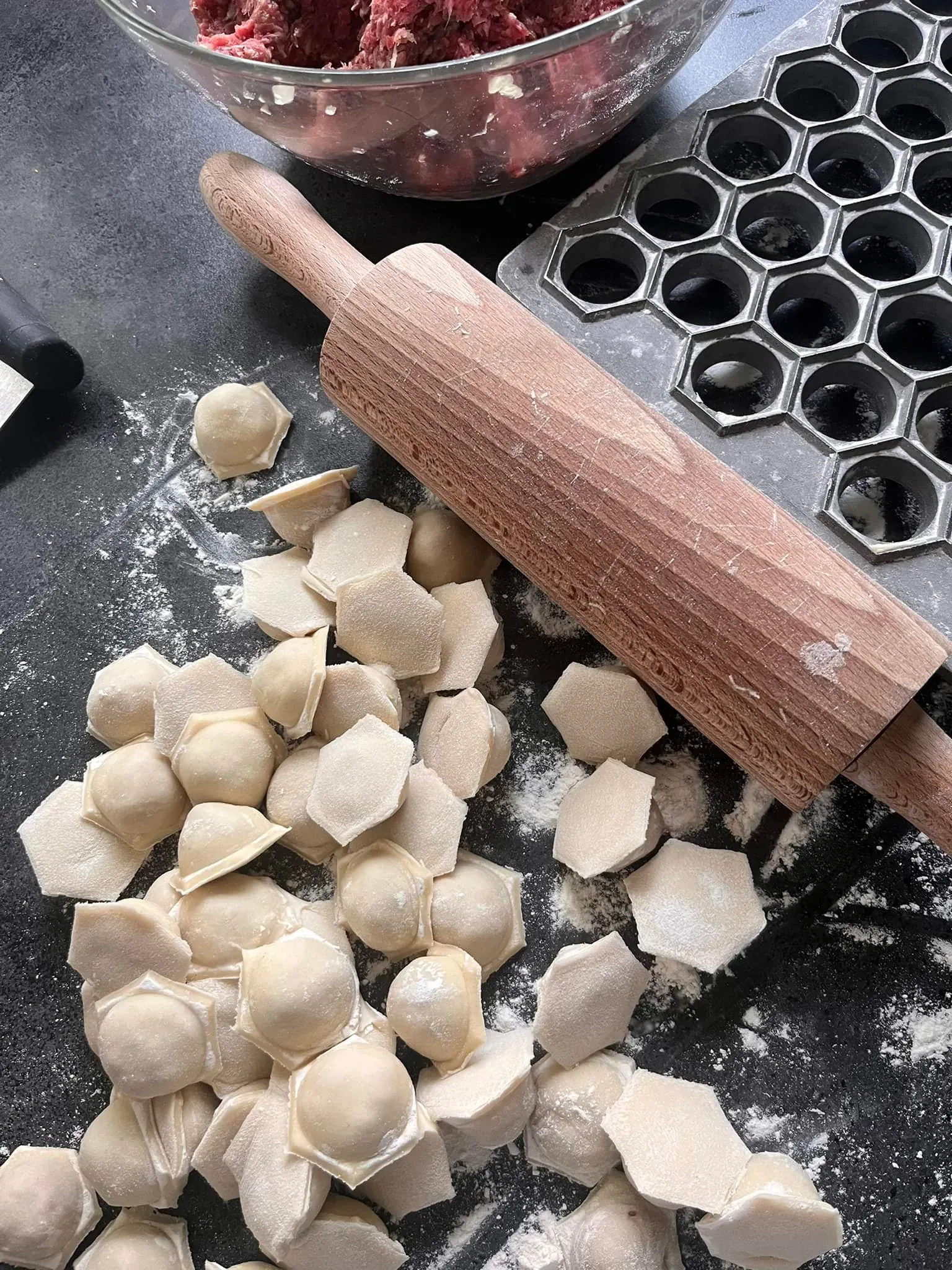
Traditional Lithuanian dumplings, known as koldūnai, are a beloved comfort food deeply rooted in Baltic culinary heritage. These small, handmade dumplings are typically filled with seasoned ground pork and wrapped in soft, tender dough. Served with sour cream or fried onions, koldūnai are hearty, satisfying, and widely enjoyed both as an everyday meal and during family gatherings. Their preparation process is meditative and rewarding, bringing together generations in the kitchen, especially during holidays and special occasions.
While koldūnai resemble Polish pierogi or Russian pelmeni, they carry distinct Lithuanian flavors through their traditional seasoning and serving styles. The richness of pork, combined with the delicate texture of the dough, creates a well-balanced bite that is simultaneously savory, soft, and slightly chewy. Often boiled and then briefly sautéed in butter or oil, these dumplings gain an extra layer of flavor that makes them irresistible.
This recipe maintains the authenticity of Lithuanian cuisine while offering tips and ingredient alternatives that suit modern home cooks. With attention to every detail—from dough elasticity to seasoning balance—you can recreate the taste of Eastern Europe in your own kitchen.
Advertisement
Possible ingredient alternatives
- Ground pork: Can be replaced with ground beef, turkey, or a mix of pork and beef for a lighter or richer taste.
- All-purpose flour: Whole wheat flour or spelt flour may be used for a more fibrous dough, though this will alter the texture slightly.
- Egg: For an egg-free dough, use a mixture of water and a tablespoon of oil or a flaxseed egg (1 tbsp ground flaxseed + 2.5 tbsp water).
- Onion: Shallots or leeks can offer a milder or more refined flavor.
- Butter (for serving): Can be substituted with oil or plant-based margarine for a dairy-free version.
- Sour cream (optional topping): Greek yogurt or vegan sour cream are good alternatives.
Best cooking tips for the recipe
- Let the dough rest: Allowing the dough to rest for at least 30 minutes improves its elasticity and makes rolling easier.
- Do not overfill: Avoid overstuffing the dumplings to prevent tearing or leaking during boiling.
- Seal tightly: Pinch the edges firmly to ensure the dumplings stay intact when cooked.
- Use floured surface: Always work on a lightly floured surface to prevent sticking.
- Boil in batches: Cook dumplings in small batches to avoid overcrowding the pot, which can lead to sticking or uneven cooking.
- Freeze extra: Uncooked koldūnai freeze well; spread them on a tray before transferring to bags for easy storage.
Ingredients
- All-purpose flour: 3 cups (360 g)
- Egg: 1 large
- Water: 3/4 cup (180 ml), more if needed
- Salt: 1 tsp (for dough)
- Ground pork: 400 g (14 oz)
- Onion (finely chopped): 1 medium
- Salt: 1/2 tsp (for filling)
- Ground black pepper: 1/4 tsp
- Butter: 2 tbsp (for serving)
- Sour cream: 4 tbsp (optional, for serving)
- 1. Prepared the dough by combining flour and salt in a large bowl. A well was formed in the center, into which the egg and water were added.
- 2. The mixture was gradually brought together using a fork, and then kneaded by hand for about 8 minutes until smooth and elastic. If the dough felt too dry, an extra tablespoon of water was incorporated. The dough was then wrapped in plastic wrap and left to rest at room temperature for 30 minutes.
- 3. While the dough was resting, the pork filling was prepared. Ground pork was placed in a mixing bowl. Finely chopped onion, salt, and black pepper were added. The mixture was stirred thoroughly to distribute the seasoning evenly. For extra flavor and tenderness, a tablespoon of cold water was added to the filling and mixed in until fully absorbed.
- 4. Once rested, the dough was divided into two portions. One piece was rolled out thinly (about 2 mm thick) on a floured surface. Using a round cookie cutter or glass (6–7 cm diameter), circles were cut from the dough. The scraps were reserved and re-rolled later.
- 5. Each dough circle was filled with about 1 teaspoon of pork mixture. The edges were folded over to form a half-moon shape, and pressed firmly to seal. For extra security, the edges were crimped with a fork or pinched decoratively.
- 6. A large pot of salted water was brought to a gentle boil. Dumplings were added in batches, stirred gently to prevent sticking, and cooked for 5–6 minutes or until they floated to the top and appeared plump.
- 7. They were removed with a slotted spoon and transferred to a plate.
- 8. In a separate pan, butter was melted over medium heat. The cooked dumplings were added and lightly sautéed until the edges turned golden brown. This step added flavor and texture, but could be skipped for a softer finish.
- 9. The dumplings were served warm, topped with sour cream or additional melted butter, according to preference. A sprinkle of fresh herbs or fried onions could also enhance the final presentation.
Recipe Directions

